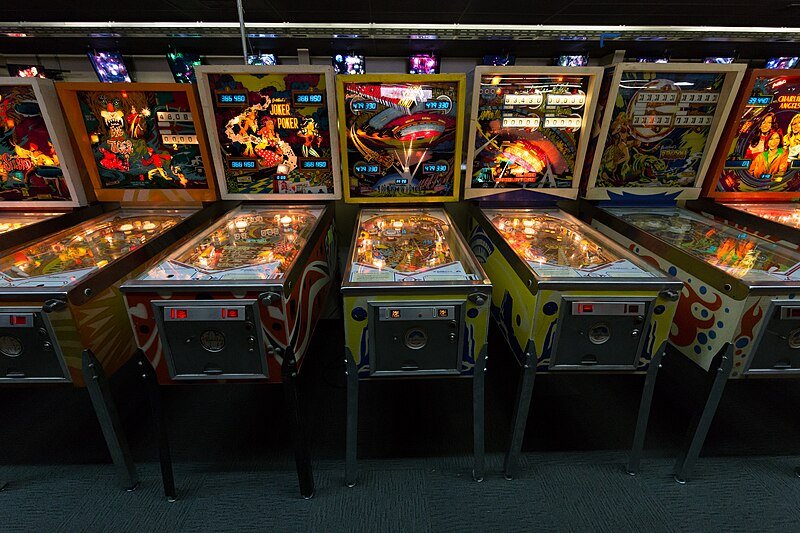In 1920, the United States passed the Eighteenth Amendment, effectively banning the production and sale of alcohol nationwide. This of course made the drinking of alcohol cool as all get out, and as a result a bunch of people became willing to pay out the nose to get their hands on some sweet sweet booze. If you have any sense of history whatsoever you probably already know what happened next, but for the ignorant bastards amongst you, I’ll go ahead and just say it. Prohibition led directly to the rise of organized crime. Local thugs, who once made their living shaking down local small business owners, suddenly found themselves raking in obscene amounts of dough from black market liquor sales, some of which they used to bribe local officials and to buy firearms to use on their competition. However, the whole shebang came crashing down in 1933 when the government, realizing that they could be the crooks making money off of booze, ended Prohibition.
It should probably go without saying that the end of Prohibition was not seen as a good thing by organized crime. With a good chunk of their income suddenly gone, the gangsters were forced to increasingly rely upon their other sources of illicit funds, the largest being illegal gambling. The most popular of such games of chance were slot machines, mostly because they were easy to move around, didn’t take many people to oversee or maintain, and could be easily rigged. During Prohibition, slot machines were seen as pretty low level crimes, but the legalization of booze quickly changed that. Vice cops who wanted to keep their jobs, and politicians who still wanted to be seen as tough on crime, shifted their focus to wiping slot machines off the map, destroying thousands over the next several years. That’s when the entrepreneurial criminals got creative.
In 1931, some dude named David Gottlieb invented what we today call the pinball machine. The early pinball machines were similar to the modern version in that they involved shooting a ball via a spring loaded plunger. However, they lacked flippers to keep the ball in play. Pinball proved to be extremely popular, both amongst adults and children, with machines quickly popping up across the country in bars, drug stores, and other such places. Hundreds of companies started manufacturing the machines, which collectively around the country made more money a year than the entire motion picture industry. However, though many were owned by legitimate businesses, the pinball machine turned out to be a godsend to organized crime. While slot machines were being increasingly targeted, purveyors of illegal games of chance shifted to pinball machines to make up the difference, turning them into a form of gambling by promising payouts if players reached certain scores.
The politicians and vice squads of the day were of course not blind to such shenanigans, but it was difficult to prove whether or not a pinball machine was being used for gambling or just for fun. This left the enforcers of law in a bit of a quandary, which they eventually solved by calling for the outright ban of the machines. In 1942, buoyed by claims that pinball was teaching children to gamble, New York City became the first major city to outlaw pinball. Over the next decade, almost every major city in the country followed suit. Thousands of machines were seized and destroyed.
Despite such setbacks, the pinball industry continued to stagger onward over the next several decades. Organized crime moved on, shifting their focus to legal gambling in Las Vegas and eventually illegal drugs, but low-level crooks continued to run illegal pinball machines in various bars and other locations. Many of these were ignored by police, what with other actual crimes occurring, though the occasional raid or palm greasing still took place. For their part, the pinball manufacturers tried to distance themselves from the idea that the machines were games of chance by introducing more features requiring skill, including the addition of flippers in 1947. However, the stigma proved hard to remove. Throughout the 1950’s and most of the 1960’s, various media used the playing of pinball as shorthand for the rebelliousness of youth.
The ban on pinball machines didn’t start to end until 1976, when a pinball wizard named Roger Sharpe proved to the New York City Council that it was a game of skill by calling his shots. The ban was soon after ended in most other cities, though some bans remained on the books as late as 2016. Suddenly legal, pinball entered a new heyday which came to an abrupt end as video game arcades became popular in the 1980’s. Eventually the industry collapsed to only a single manufacturer, though it has found new popularity again in recent years.
Image: https://commons.wikimedia.org/wiki/File:Gottlieb_Pinball_-_24155803169.jpg
